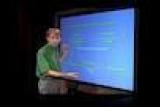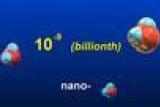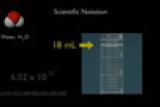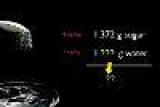Conceptual Physics
Chapter 1: About Science
Unit Conversion
Chemistry involves working with physical quantities, which are described using a number and a unit. The author also presents the unit conversion Calculation Corner in which you learn how to convert the units of a physical quantity. Duration: 4:30.
Metric Prefixes
This video is a practice session on learning the metric prefixes ending with an awesome conversion factor example. Duration: 7:10.
Scientific Notation
This video is a brief introduction to scientific notation. Duration: 7:31.
Significant Figures
An introduction of the concepts of accuracy and precision followed by an explanation of significant figures. Duration: 8:04.
Watch these additional videos to complete this tutorial.
Table of Videos
- Chapter 1: About Science
- Chapter 2: Newton's First Law
- Chapter 3: Linear Motion
- Chapter 4: Newton's Second Law
- Chapter 5: Newton's Third Law
- Chapter 6: Momentum
- Chapter 7: Energy
- Chapter 8: Rotational Motion
- Chapter 9: Gravity
- Chapter 10: Projectile and Satellite Motion
- Chapter 11: The Atomic Nature of Matter
- Chapter 12: Solids
- Chapter 13: Liquids
- Chapter 14: Gases
- Chapter 15: Temp, Heat, and Expansion
- Chapter 16: Heat Transfer
- Chapter 17: Change of Phase
- Chapter 18: Thermodynamics
- Chapter 19: Vibrations and Waves
- Chapter 20: Sound
- Chapter 21: Musical Sounds
- Chapter 22: Electrostatics
- Chapter 23: Electric Current
- Chapter 24: Magnetism
- Chapter 25: Electromagnetic Induction
- Chapter 26: Properties of Light
- Chapter 27: Color
- Chapter 28: Reflection and Refraction
- Chapter 29: Light Waves
- Chapter 30: Light Emission
- Chapter 31: Light Quanta
- Chapter 32: The Atom and the Quantum
- Chapter 33: The Atomic Nucleus
- Chapter 34: Nuclear Fission and Fusion
- Chapter 35: Special Theory of Relativity
- Chapter 36: General Theory of Relativity




